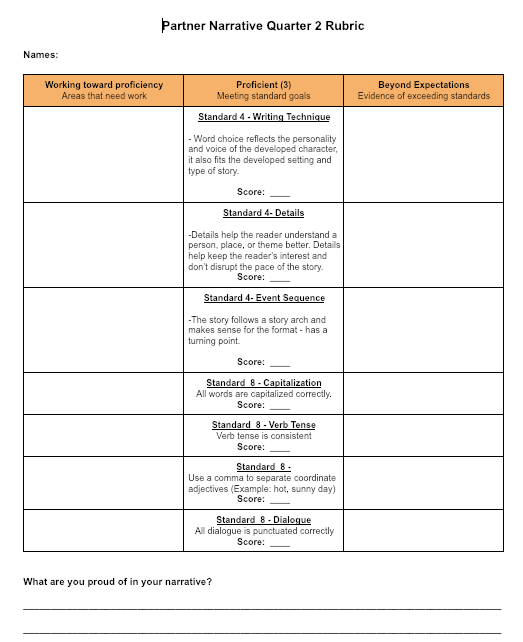
Single Point Rubrics What Are They And Why You Should Be Using Them The Teach Simple Blog
The single-point rubric helps Trailblazer and its students better pursue mastery-based education. Educators found that traditional rubrics led their students to focus too much on the numbers assigned as a fixed grade, and that students were complacent about receiving a one or two. By using a rubric that reframes the performance conversation in.
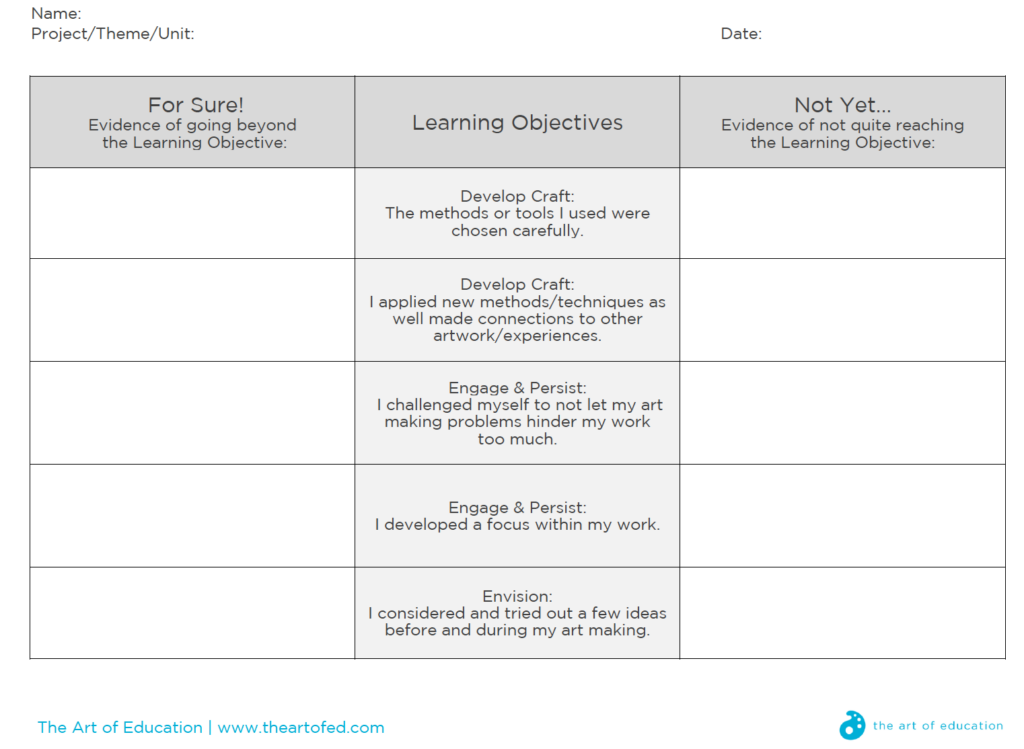
Can You Simplify Your Rubrics to a Single Point? The Art of Education University
Single-Point Rubric. Similar to an analytic/descriptive rubric in that it breaks down the components of an assignment into different criteria. The detailed performance descriptors are only for the level of proficiency. Feedback space is provided for instructors to give individualized comments to help students improve and/or show where they.

How SinglePoint Rubrics Can Improve The Quality Of Student Work Middle School Geography, 6th
But there is a more impactful and flexible rubric everyone should be aware of, the single-point rubric. The single-point rubric was first created by Mary Dietz in 2000 and has been gaining popularity in recent years. Different than the Holistic and Analytic Rubric, Single-Point Rubrics identify one achievement level for a set of criteria.

Single Point Rubric YouTube
The Single-Point Mastery Rubric. February 5, 2018. by Competency Collaborative. This post by MC Co-Director Joy Nolan has been adapted from a longer piece featured on Competency Works. Behold the single-point rubric, my favorite tool discovery of the year. (And click here for a single-point rubric template you can copy and use.)
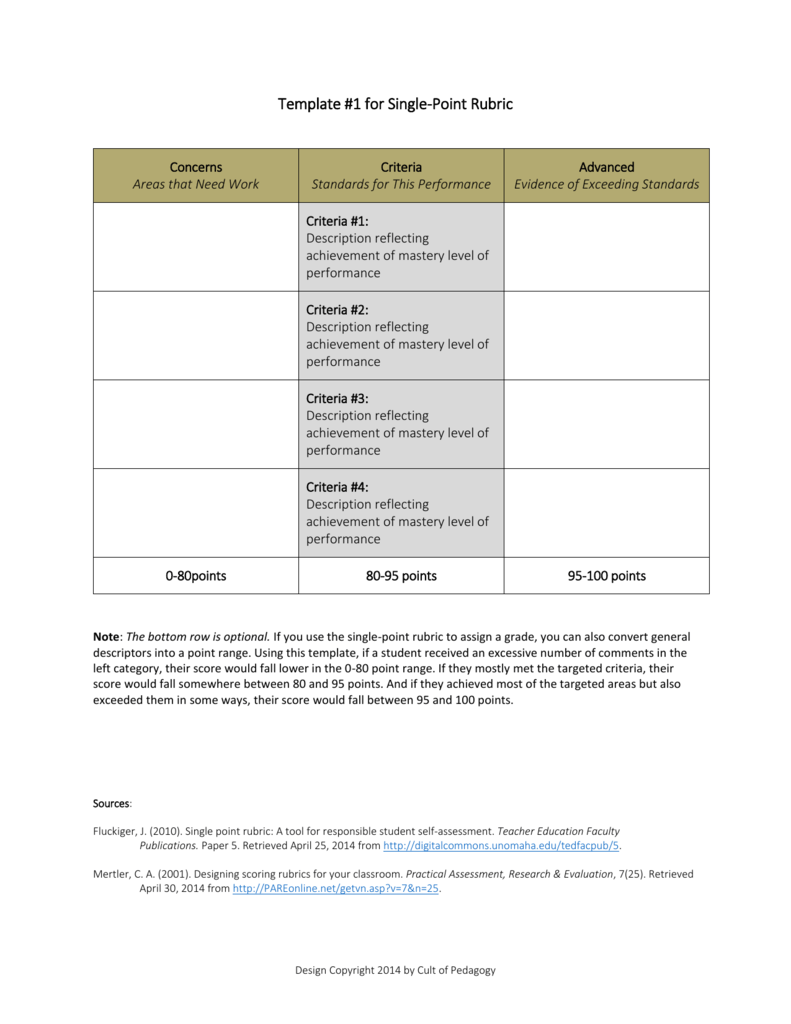
Template 1 for SinglePoint Rubric
Single-point rubrics help teachers make an important shift with the assessment process. With traditional rubrics we try to fit what the student has produced into one of the indicators in one of the many boxes corresponding to a number score. With single-point rubrics we shift to providing evidence of meeting, exceeding, or falling short of the.

Pin on Teaching
The single-point rubric offers a different approach to systematic grading in the classroom. Like holistic and analytic rubrics, it breaks the aspects of an assignment down into categories, clarifying to students what kinds of things you expect of them in their work. Unlike those rubrics, the single-point rubric includes only guidance on and.
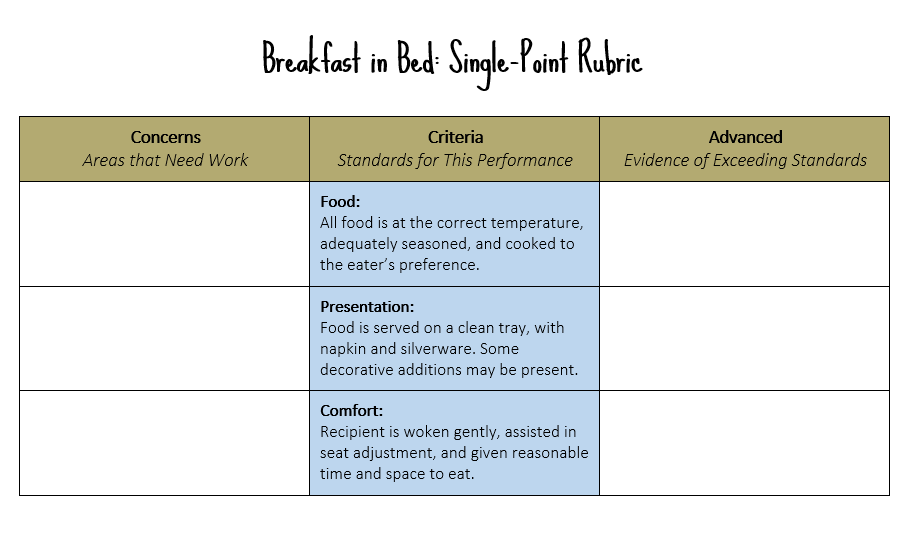
Know Your Terms Holistic, Analytic, and SinglePoint Rubrics Cult of Pedagogy
The single point rubric is an ethical tool to assist students with their responsibilities of goal setting and self-assessment of their own education. In this article, I describe key features of the single point rubric, how it is used, and how it is different from traditional multiple point rubrics. I also share some benefits of using single.
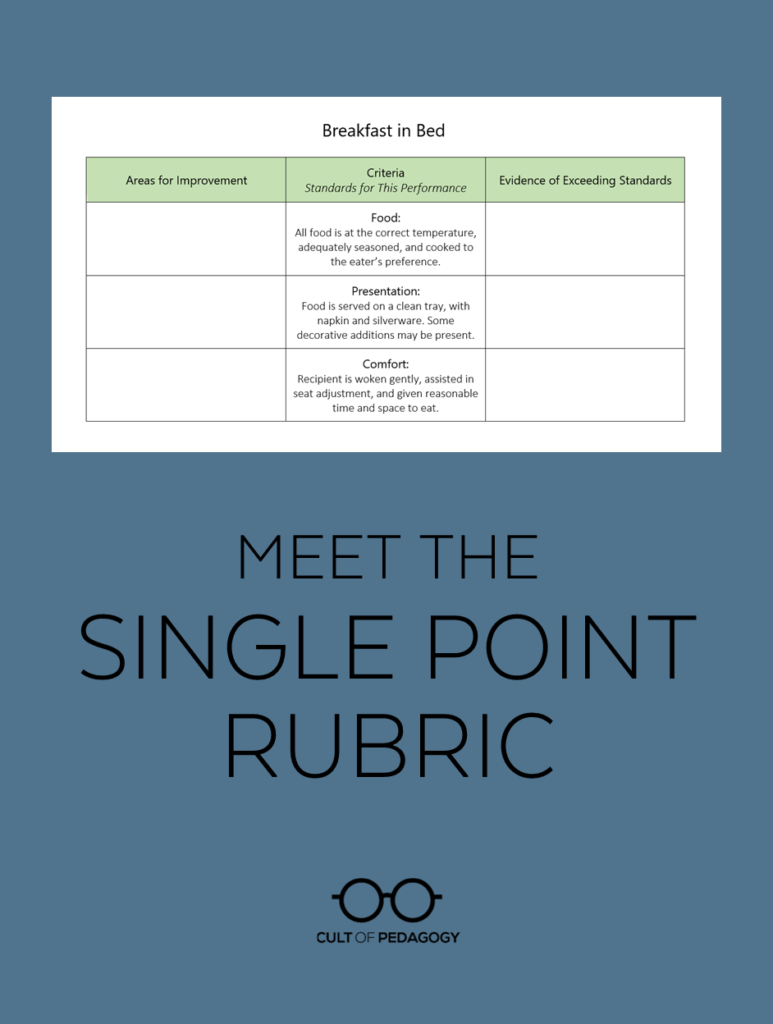
Meet the Single Point Rubric Cult of Pedagogy
single point rubrics provide high-quality feedback. They are the best option in any situation that benefits from feedback. And that is most situations. The personally-tailored feedback provided in a single point rubric will be the highest quality of the three types of rubric. This option is flexible, without sacrificing clarity.

(PDF) Single Point Rubric A Tool for Responsible Student SelfAssessment
Uses of the single-point rubric. Enter this lean, mean machine, a rubric as versatile as a Swiss Army knife, or one of those mind-boggling 27-in-one bicycle tools. Here are some ideas for how to use it to communicate about learning.

Why SinglePoint Rubrics Are Awesome And 4 Ways To Use Them
Single point rubrics are a type of assessment tool that focus on the criteria for success in a given task without providing predefined levels or descriptors of performance. Unlike traditional rubrics that outline different levels of achievement (e.g., excellent, good, fair, poor), a single point rubric simply defines the target criteria for a.

Writing a Single Point Rubric YouTube
Single-Point Rubric " Single-Point Rubric " by Cambrian College is licensed under CC BY-NC-SA 4.0 . Single-Point rubrics outline the success criteria for an assessment; however it leaves room on either side of the criteria for written feedback about meeting expectations and areas for improvement.

The Awesomeness of the Single Point Rubric Living the Learning Curve
A single point rubric is a modification of a traditional analytic rubric. Jennifer Gonzalez, who has written several articles about single point rubrics, defines a single point rubric this way: A single-point rubric is a lot like an analytic rubric, because it breaks down the components of an assignment into different criteria. What makes it.

Single Point Rubric High School (Rold, 2007 1 ) Persuasive Writing Download Table
Single-point rubrics help teachers make an important shift in the assessment process. With traditional rubrics, we try to fit what the student has produced into one of the indicators in one of the many boxes corresponding to a number score. With single-point rubrics, we shift to providing evidence of meeting, exceeding, or falling short of the.
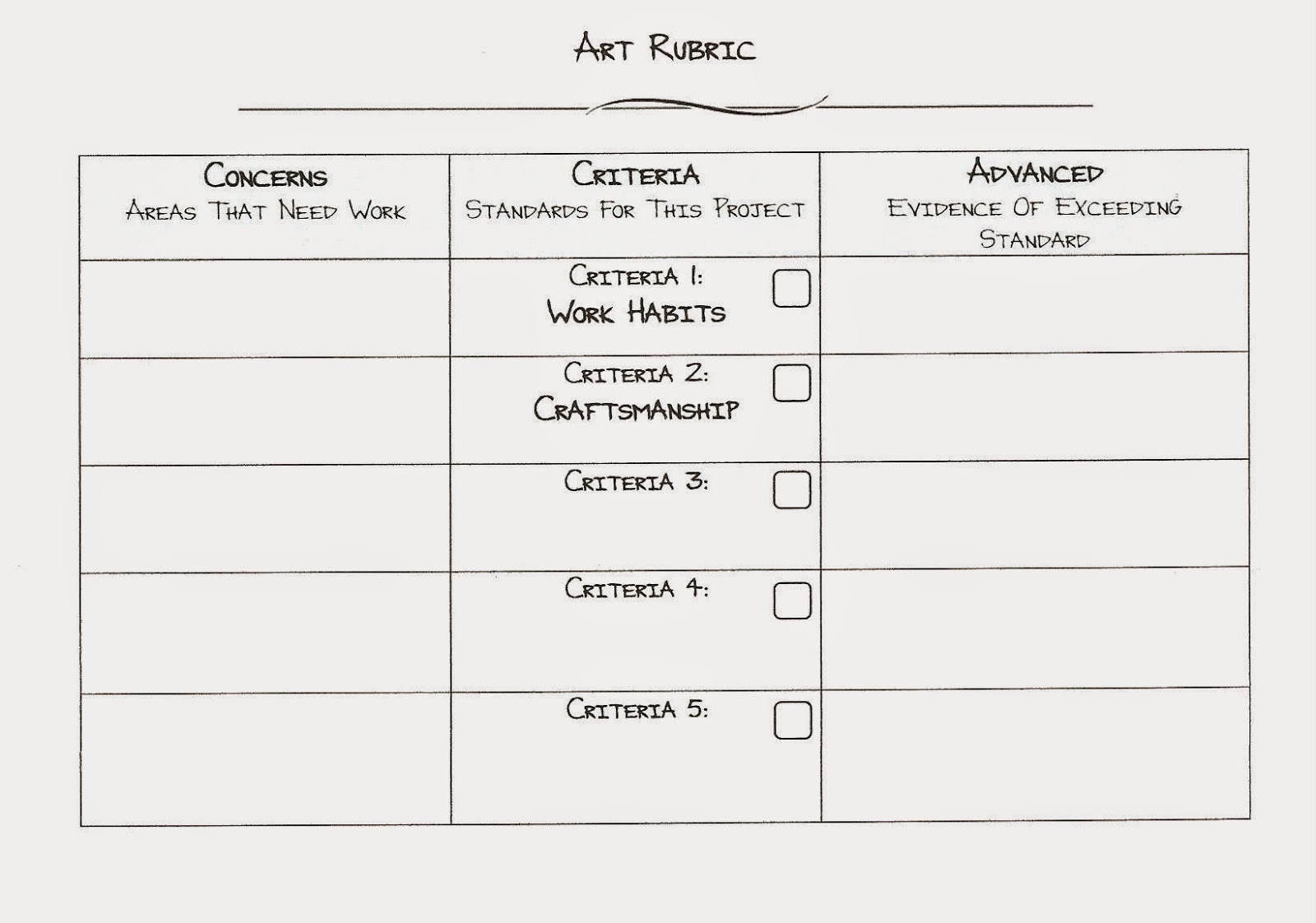
art inklings The Single Point Rubric
A streamlined rubric form, using one column to specify the target standard, offers advantages for accessibility-especially fewer words to absorb-over more typical multi-column rubrics. This Single-Point Mastery Rubric is an example. Joy Nolan adaptation of single-point rubric. Mastery Collaborative.
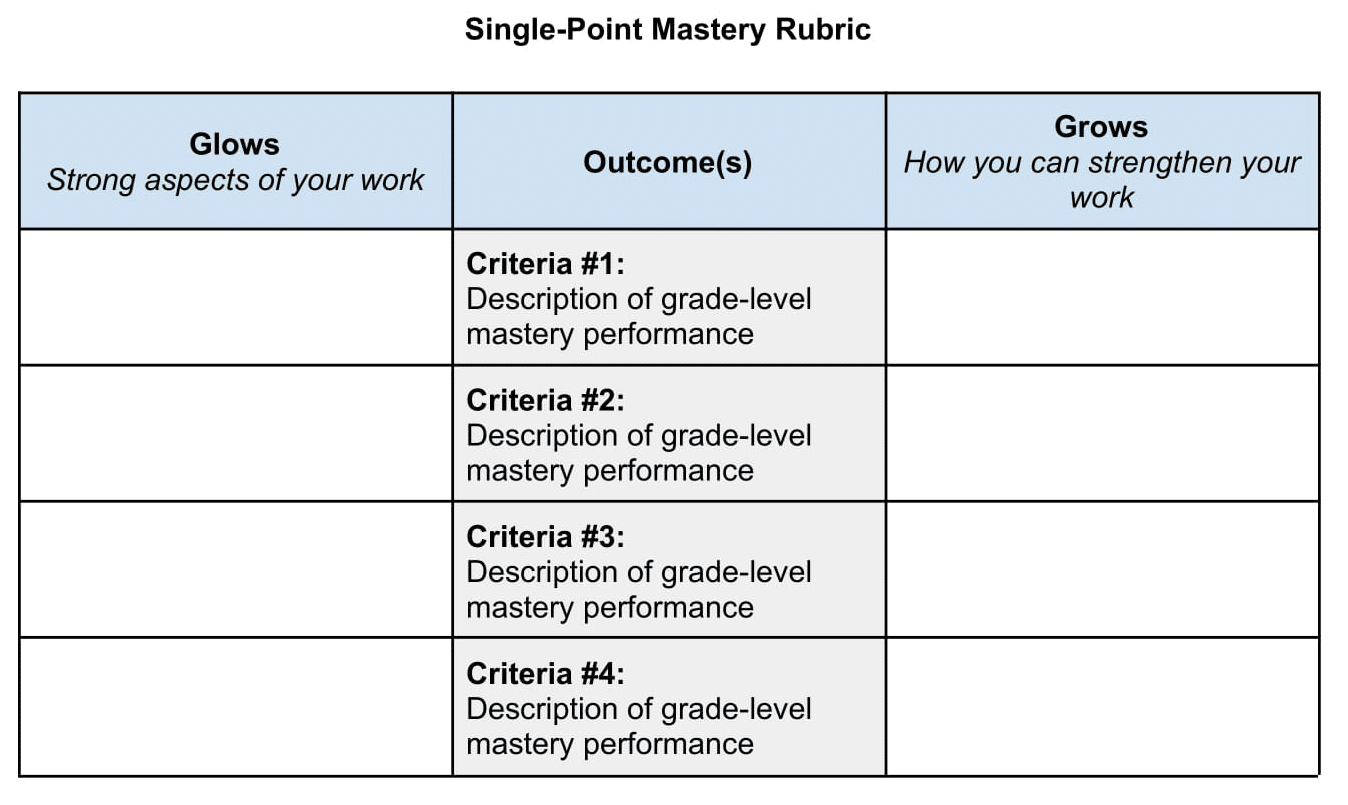
The SinglePoint Mastery Rubric Aurora Institute
The single-point rubric simply identifies the objectives of an assignment but allows the teacher to assess a limitless spectrum of possible responses students can offer. In Rethinking Rubrics, Maja Wilson points out that holistic and analytic rubrics drive a teacher to think only about the rubric while assessing student work. Teachers are.
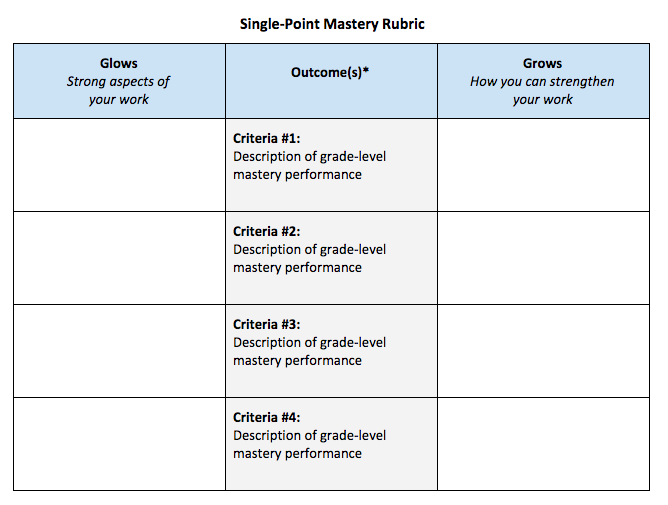
The SinglePoint Mastery Rubric — Competency Collaborative
The practice of using single point rubrics is slowly but surely catching on. The simplicity of these rubrics — with just a single column of criteria, rather than a full menu of performance levels — offers a whole host of benefits: Teachers find them easier and faster to create, because they no longer have to spend precious time thinking up.